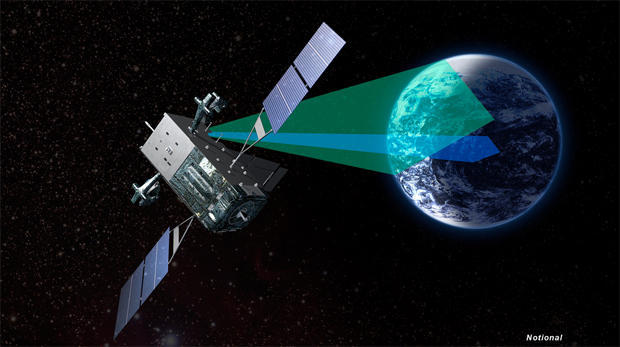Atlas 5 rocket makes successful launch
A United Launch Alliance Atlas 5 rocket blasted off from Cape Canaveral Friday evening and boosted a missile early warning satellite into orbit, the third in a constellation of sophisticated space-based infrared sensors capable of detecting intercontinental ballistic missiles as well as smaller tactical weapon and even forest fires.
The workhorse Atlas 5’s Russian-built RD-180 first stage engine flashed to life at 7:42 p.m. EDT, spooling up to full thrust and pushing the 188-foot-tall booster away from pad 41 at the Cape Canaveral Air Force Station, lighting up the night sky with a brilliant jet of fiery exhaust.
Launch came a day late because of an instrumentation glitch Thursday night involving the RD-180 that triggered a half-hour delay. Then, inside four minutes to takeoff, an aircraft strayed into restricted airspace and the launching was scrubbed for the day.
But it was clear sailing Friday, and the RD-180, generating 860,200 pounds of thrust, quickly boosted the rocket and its payload out of the dense lower atmosphere.
The Russian engine shut down as planned four minutes after liftoff and the flight continued on the power of the Centaur second stage’s single hydrogen-fueled Aerojet Rocketdyne RL10C engine. After a second Centaur “burn,” the 10,000-pound Space Based Infrared System -- SBIRS -- satellite was released to fly on its own in an initially elliptical orbit.
Over the next nine days, on-board thrusters will move the solar-powered spacecraft into a circular orbit 22,300 miles above the equator where satellites take 24 hours to complete one trip around the planet and thus appear stationary in the sky. From its eventual perch, the SBIRS GEO 3 satellite will be able to monitor broad areas of the hemisphere below.
The new satellite will join two other SBIRS (pronounced SIB-ers) spacecraft already in geosynchronous orbit -- a fourth satellite is scheduled for launch in November -- that use telescopes and sophisticated infrared and “staring” sensors to constantly monitor the planet below. The sensors can quickly detect the heat produced by a rocket during launch, allowing the spacecraft to quickly plot the path of the missile and determining where the flight originated.
The SBIRS system also integrates data from older Defense Support Program, or DSP, early warning satellites along with infrared sensors “hosted” by other classified military satellites in lower elliptical orbits.
“The SBIRS constellation as a whole delivers timely, reliable, accurate missile warning and surveillance information to the president, the secretary of defense, combatant commanders, intelligence communities and other key decision makers,” Col. Dennis Bythewood, director of the Remote Sensing Systems Directorate at Los Angeles Air Force Base, told reporters before launch.
The SBIRS satellites provide “faster and more accurate missile warning data to the war fighter, detect dimmer events and shorter missile burns than our legacy Defense Support Program, or DSP, satellites. It’s also going to enhance out point-of-origin determination and point-of-impact prediction.”
Along with providing early warning of strategic missile launches, the SBIRS constellation also can detect in-theater rockets, provides technical intelligence about rocket capabilities and improves “battlespace awareness,” Bythewood said.
The new capabilities are increasingly important, he said, in a world were more nations are fielding ever more sophisticated weapons.
“When the system was originally designed in a Cold War era, we were really worried about the Soviet Union and its allies,” he said. “In today’s world, and certainly over the last 20 years, the proliferation of missiles outside of that concentrated area has grown demonstrably.
“Regional systems present in Asia and the Middle East are well within the range of our deployed forces. So the SBIRS constellation is tasked with providing timely, reliable and accurate missile warning information to protect our nation and our troops operating abroad.”
The SBIRS satellites are built by Lockheed Martin, incorporating sensor suites provided by Northrup Grumman. SBIRS GEO 3 and 4 are valued at $1.2 billion all together, including the costs of the rockets needed to launch them.






